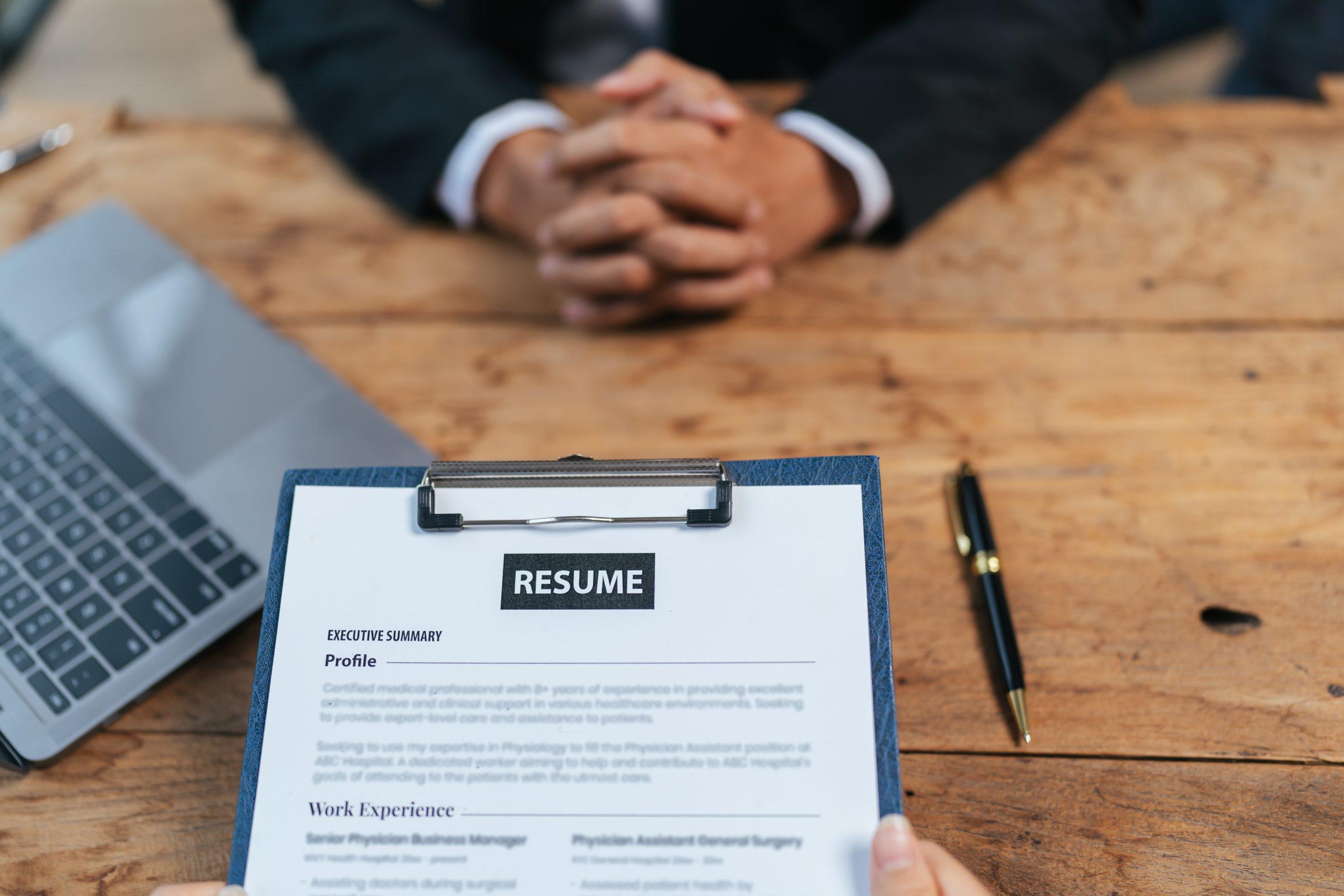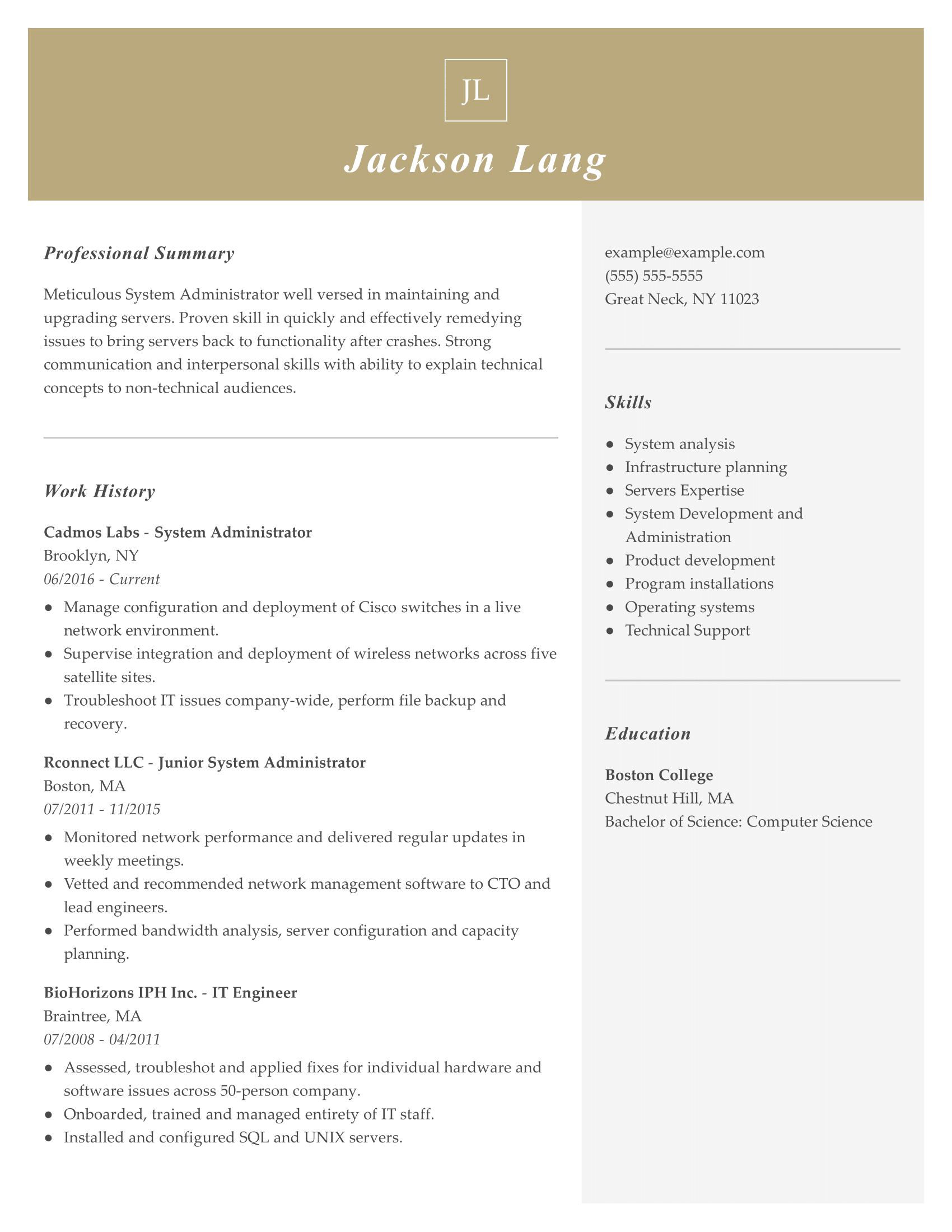What Should a Resume Look Like in 2025? Guide Examples
Whether you’re writing a resume for the first time, it’s been a few years since you last updated it, or you’re wondering what the newest resume trends are, this guide has you covered on what a resume should look like.
You’ll be glad to know that the U.S. currently has more job openings than unemployed workers—1.7 million open jobs, to be exact.
To land one of these opportunities, you’ll need an updated resume.
What should a professional resume look like?
If you want to impress recruiters, your resume must have a professionally designed resume template that’s visually appealing but work-appropriate, like the one below. In addition to an eye-catching design and optimized layout, you should always tailor your resume’s content to each job application’s unique requirements.
Check out this example of what a resume should look like:
You can find hundreds of resume examples tailored to your desired job title and industry to download.
For a more personalized approach, you can customize your resume with pre-written content by Certified Professional Resume Writers and the most user-friendly design tools in our Resume Builder.
Formatting and design tips for a good resume
Think of your resume’s appearance, including templates, design and formatting, as your first impression to employers.
Regarding what a resume should look like, the same way you’d show up for an in-person interview in your best attire, your resume should have a polished design.
Here are some must-follow tips for a good-looking resume:
- Pick the appropriate resume format: Depending on your years of experience, you will choose among three recruiter-approved resume formats: chronological, functional and combination. The correct resume format will spotlight your best qualifications to convince employers you’re prepared for the job.
- Choose an easy-to-read font: Choose a professional resume font like Arial, Helvetica, Verdana or Georgia. Sans serif and serif fonts are acceptable, but avoid fonts with too many frills, as these can be a headache to read and look unprofessional. Keep your chosen font size between 10 and 12 for the main text and 12 and 14 for the section headings.
- Add bullet points to break up text: When writing text-heavy sections like your work experience or listing multiple items, employ bullet points to distribute your content better and make it easy for recruiters to scan.
- Keep one-inch margins: Ensure your margins are at least one inch on all sides of your resume for a balanced look.
- Use line spacing for enhanced readability: Line spacing at 1.5 points is the sweet spot for making all your resume’s content fit onto one page without looking cramped and difficult to read.
- Liven up your resume with design elements: Incorporating various design elements such as bold text, a pop of color or line dividers can enliven your resume. Be careful not to overdo it by choosing one or two design options.
- Avoid profile pictures: Although increasingly popular, including a profile picture on your resume can be problematic resulting in potential racial, gender or age bias.
PRO TIP
A resume with a vibrant design can be visually attractive for a human recruiter. However, many companies use applicant tracking systems (ATS) that go haywire when trying to scan complex resume layouts, so a simple resume template is the safest bet. Want to make sure your resume is ATS-friendly? Upload it to our ATS Resume Checker!
Key sections of a good resume
The right resume template and design can make your resume stand out, but as Bill Gates once said: “Content is king.”
If you want to know what a good resume should look like, it should include the five main sections: contact information, resume profile, work experience, skills and education.
Here’s a breakdown of how to write a resume with these main sections, plus tips on additional sections to boost your application.
Contact information
This one’s pretty basic. Your contact information should include:
- Your full name
- Phone number
- Your working location (city and state)
Some additional details you can include here are:
- Resume headline
- LinkedIn profile
- Portfolio
- Links to your website or relevant social media accounts (if applicable to the job)
Here’s an example of a resume’s contact information section:
Brenda Rivers
HR Specialist With Expertise Onboarding and Handling Acquisitions and Mergers
555-555-5555 | brendarivers23@example.com | Tallahassee, FL
LinkedIn: linkedin.com/in/brendarivers
Resume profile
Right below your contact information, you must include a brief resume profile that formally introduces yourself to employers by outlining your most relevant qualifications for the position.
There are two approaches you can take when writing this section. The most common strategy is the resume summary, which includes details like:
- Your profession
- Years of experience
- Top skills
- Required education or certification
- Relevant achievement to capture recruiters’ attention
The other approach, the objective statement, leaves space for you to share your career objectives and goals within this role and beyond. This strategy is ideal for less experienced job seekers.
Resume summary example
Objective statement example
Work experience
The work experience is one of the first sections recruiters will evaluate, so make sure yours has all the necessary details, including:
- Your jobs listed in reverse chronological order (most recent first and work backward)
- Your official job title
- Employer name
- Work location (city and state)
- Dates of employment (month and year)
Except for functional resumes, your work experience should include at least three bullet points describing your most relevant and impressive achievements per job.
Here’s an example of a complete work experience section:
Cashier 06/2022 – 08/2022
The Burger Stop | Tampa, FL
- Learned every menu preparation and 20+ smoothie and shake beverages to meet all customer needs, maintaining 97% customer satisfaction.
- Reconciled cash drawer at the start and end of each shift, checking for errors and resolving irregularities, reducing loss by 76%.
- Processed an average of 150 POS transactions, including checks, cash and credit purchases.
Skills
Your skills section should include six to eight of your most job-relevant resume skills.
When choosing your skills, include a balanced mix of soft, hard and technical skills to show employers you possess the knowledge, technical ability and interpersonal qualities to be a well-rounded employee.
Here’s how a skills section should look:
Skills
- Leadership
- Communication
- Risk Management
- Budgeting and Financial Planning
- Agile Methodologies
- Conflict Resolution
- Scheduling and Time Management
- Data Analysis and Reporting
Education
Last but certainly not least is the resume’s education section, which will validate you possess the educational and training requirements to succeed at a job.
When listing your degree, always include the following:
- Your degree (BA, BS, MBA, High School Diploma)
- School name
- Location (City and state)
In most cases, it’s best to leave out the graduation date to avoid hiring bias from recruiters who guess your age.
However, if you have an unfinished degree, you may add an Expected Graduation Date along with the month and year you’ll be finishing your studies.
Some bonus details that can boost your education section are:
- GPA (3.5 or higher)
- Class percentile rank
- Class valedictorian (if awarded)
- Placement in honor roll
- Student government position
Here are two examples of an education section:
Bachelor of Science in Business Administration
Northeastern University, Boston, MA
Expected Graduation Date: May 2025
- GPA: 3.8/4.0
- Dean’s List: Fall 2023, Spring 2024
- Relevant Coursework: Project Management, Business Analytics, Financial Accounting, Marketing Strategy
Sacred Heart High School, San Diego, CA
- GPA: 4.0/4.0
- Honors: Valedictorian, National Honor Society
- Activities: Student Council President, Varsity Soccer Team Captain
PRO TIP
If you’re wondering what a college resume should look like, you can find over a dozen samples on our student resume examples page and more writing tips on our How to Write a College Resume article.
Optional additional sections
Once you’ve completed all five resume sections, you can customize your resume with additional sections to show the full range of your accomplishments.
Some additional resume sections you can include are:
- Certifications
- Licenses
- Volunteer Work
- Projects
- Languages
- Additional Skills
- Hobbies and Interests
- Honors and Awards
- References (only if required)
- Salary requirements (only if requested)
Now that you know what a resume should look like, take advantage of our Resume Builder and get a personalized resume in minutes! Simply type in your desired job title and years of experience, and watch as our Builder generates a custom resume in no time.
Resume tips to get noticed by recruiters
As resume and career experts, we’ve learned a few tips and tricks for getting your resume to wow any recruiter.
Always tailor your resume to each job.
Don’t use the same resume for every job application. Instead, edit a new version with the skills and qualifications you find in the job description. Tailoring your resume is particularly important if you’re using ChatGPT to write a resume, since AI-generate resumes can read too generic.
Incorporate keywords from the job ad.
One of the easiest ways to tailor your resume to each job is to find resume keywords in the job description. These keywords may be skills, certifications or areas of expertise. You should include these throughout your resume profile, work experience descriptions and skills sections.
Make your resume ATS-friendly.
Many companies use applicant tracking systems (ATS) to scan job applications before they reach a recruiter’s hands. Therefore, if your resume isn’t optimized for the ATS, it can go straight to the reject pile before anyone sees it. You can learn about ATS and ATS-compliant resumes in our article How to Write an ATS Resume.
Pair it with a good cover letter.
If you want to boost your job application, consider including a cover letter with your resume. A cover letter is an excellent opportunity to expand on your resume and make the case to potential employers as to why you’re the right candidate for the job. Learn How to Write a Cover Letter that lands interviews.
PRO TIP
What should a cover letter look like for a resume? Check out our ready-made cover letter examples for inspiration.
FAQ
How long should my resume be?
A resume’s length depends on your years of experience. Typically, a resume should be one page if you have less than 10 years of experience. For more seasoned professionals, two pages are acceptable. Keep it concise and relevant to the job you’re applying for.
How do I handle employment gaps on my resume?
Address employment gaps by briefly explaining them in your cover letter or resume summary. Focus on how you stayed productive through volunteering, freelancing, or further education. Find more advice on this topic in our article 7 Tips for Explaining a Gap in Employment.
What should a high school resume look like?
A high school resume should include contact information, education, extracurricular activities, volunteer work, part-time jobs and relevant skills. It should be one page, use a simple format, and highlight achievements and responsibilities.
How far back should my work experience go?
When listing your work experience, choose jobs from the past 10-15 years and focus on the most relevant positions. You can omit or summarize older jobs if they don’t relate to the job you’re applying for.
Is it necessary to include references on my resume?
No, it’s not necessary to include references on your resume. It’s better to have a separate reference list to provide upon request. Simply stating “References available upon request” on your resume will just take up valuable space you could use to share achievements.
What’s the difference between a resume and a CV?
A resume focuses on your work experience and skills and is 1-2 pages long. A CV (Curriculum Vitae) is more detailed, often used in academic settings and can be several pages long. If you need help determining which is right, check out CV vs. Resume: Key Differences + Examples.







